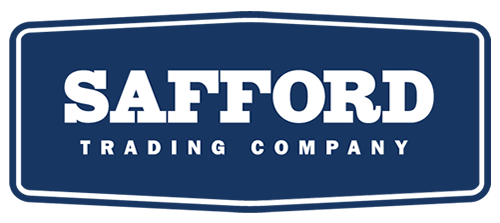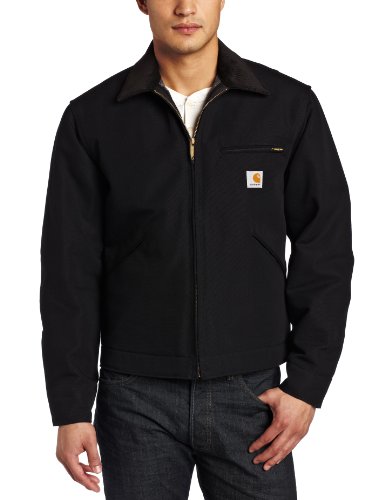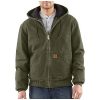Carhartt Men’s Weathered Duck Detroit Jacket J001
$75.00
Carhartt Men’s Weathered Duck Detroit Jacket J001
100% ring spun Cotton Duck
Imported
Machine Wash
Zip front
Adjustable waist
Three front pockets
The subtle textural contrast of the spread collar accentuates the mechanic-inspired silhouette in Carhartt’s Duck Detroit Jacket.
About Carhartt
The year 1889 was a time of steel, smoke, and locomotives.
Starting with only 2 sewing machines and 5 employees, Hamilton Carhartt established Hamilton Carhartt & Company. At first, he failed. But after asking railroad workers what exactly they needed, he succeeded. Under the motto “Honest value for an honest dollar,” the Carhartt union-made bib overall was created, and with it an ideal garment for workers.
By 1910 Carhartt had grown to include mills in South Carolina and Georgia, as well as sewing facilities in Atlanta, Detroit, Dallas, San Francisco, Walkerville, Toronto, Vancouver, and Liverpool. A Paris facility and a New York office and warehouse followed later.
The company offered the government the use of seven of their facilities to create uniforms for the U.S. military in World War I (and later denim for the U.S. Navy and workwear for women entering the workforce during World War II).
In 1929 the stock market collapsed, an event as brutal to this company as it was to the rest of the country. The company came close to shutting its doors for good. Keeping the business alive was a testament to the tenacity, passion and ingenuity of Hamilton and his sons. Together, they created the B01 Men’s Firm Duck Double-Front Dungaree in 1932.
At Hamilton’s death in 1937, his son Wylie took over. Wylie had played a crucial role in the “Back to the Land” program, which led to the opening of new operations in Kentucky. Four sewing and cutting facilities are still operating in Kentucky and Tennessee to this day. Wylie was also instrumental in creating the Super Dux and Super Fab hunting lines.
Wylie’s daughter Gretchen married Robert Valade who assumed leadership in 1959. In 1972, Robert Valade, VP of Sales Gus Feles, and EVP of Manufacturing Don Rasinen formed a nucleus that changed the face of the company forever. They bought their first “modern” production facility and were able to do a significant private label business for several stores including Sears, J.C. Penney and Montgomery Ward. This allowed them the necessary revenue to continue to expand its production. In 1976, the hard-finish duck Active Jac was introduced in a “Hoodie” form; the style remains the top-selling jacket for the company today. In the 70’s, the Alaska Pipeline helped grow the brand and Carhartt showed the world it could survive and thrive in the most rugged corners of the world.



